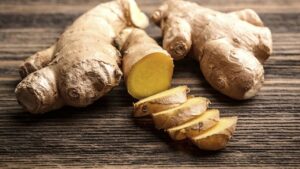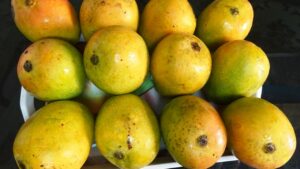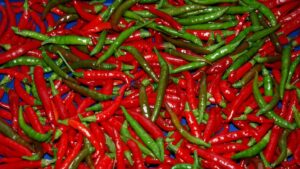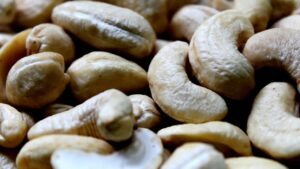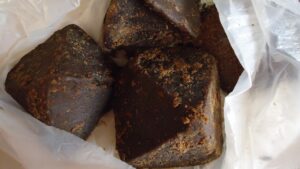Tamarind, a tropical fruit, infuses an additive flavour in cuisines. The soft, sticky pulp, which encases a black seed and tastes sweet-sour, is removed from the crescent-shaped pods.
Tamarind is rich in tartaric acid that adds a tart taste to drinks and dishes. Tamarind tastes sour when it is young.
With ageing, tamarind gets sweeter though the basic flavour remains acidic and sour.
What is Tamarind (Imli)?
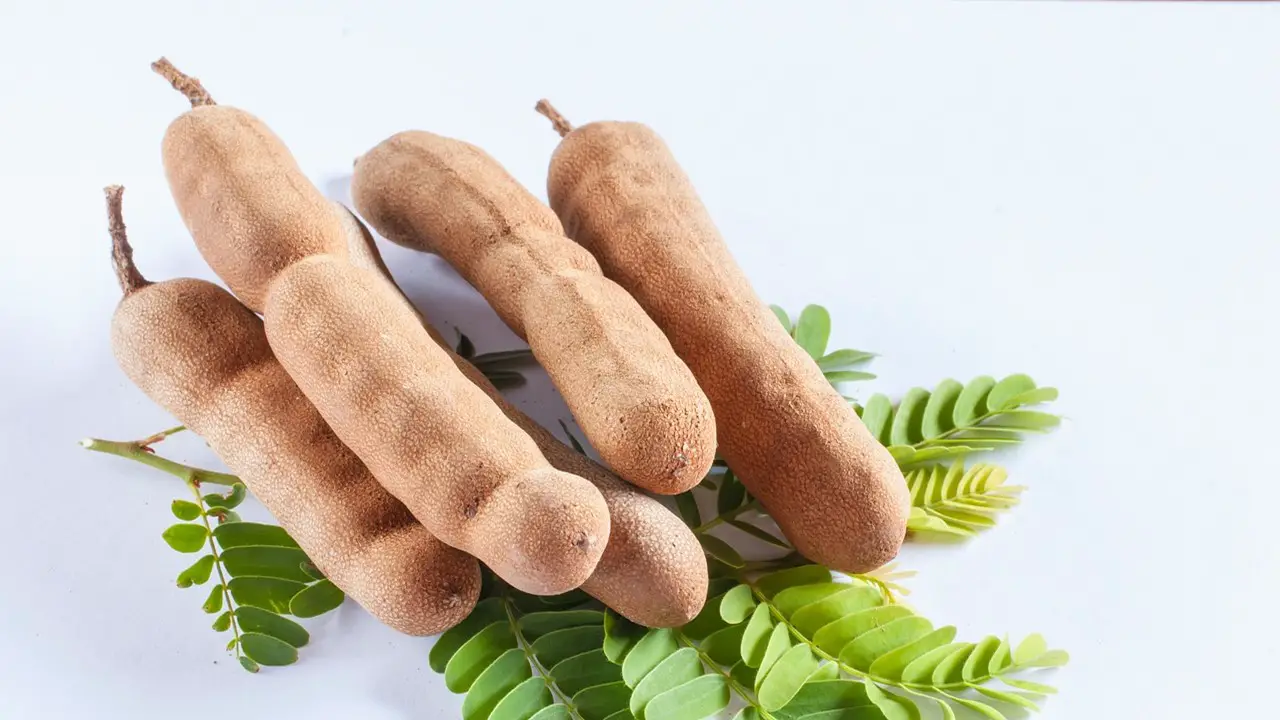
Tamarind or imli is a type of fruit that grows on a tropical tree native to Africa, but also cultivated in many other regions around the world.
The fruit is long and pod-like, containing a brown pulp that has a sweet and sour taste.
Tamarind is commonly used as a flavoring agent in cooking and as a key ingredient in many traditional dishes, such as chutneys, curries, and soups.
It is also used in a variety of beverages, including juices, teas, and cocktails.
Uses of Tamarind in Indian Cuisines
Tamarind is a popular spice condiment widely used in Indian cuisine. It is easily available in the market.
Tamarind comes in two varieties – sweet and sour. Sweet variety is used in Thai cooking whereas Indian delicacies owe a lot to the sour type.
Have you heard about a drink namely amlana? It is a Rajasthani drink.
The drink is made from tamarind pulp flavoured with cardamom and pepper. Black salt lends the drink an amazing flavour that is further perked up by minty decoration.
Tamarind and South Indian cuisines share an intimate relationship. Tamarind is a part and parcel of South Indian kitchens.
The most popular delicacy from the South is sambar. It is cooked in South Indian households almost daily. The dish makes a good use of tamarind’s tanginess.
Rasam is another South Indian delight. Rasam without idli – how will it taste? Awful, definitely!
Tamarind rice, also known as puli sadam, pulihora, puliyodharai or puliyogare, is a popular South India dish.
This sour, spicy delicacy is prepared with rice, tamarind pulp and a special masala mix (3 types of lentils, sesame seeds and Kashmiri red chillies).
South Indian sabzis are also blessed with the tanginess of tamarind. Hyderabadi mirchi ki salon is a popular Indian curry served with biryani though it also works well with rice, chapati or paratha. Without tamarind, it will never be that divine!
Bisi bele bhat is a popular delicacy in Karnataka. Tamarind finds a pride of place in the curry blessed with the goodness of coconut and a host of spices. A dollop of ghee gives the finishing touch for a luxury flavour.
Mysore chutney, famous chutney traditionally served with dosa, is extremely mouth-watering.
Tamarind pulp, dals, spices and jaggery create the magic that you will love to relish. Sourness of tamarind and sweetness of jaggery perfectly balance each other, infusing a sour-sweet taste in the chutney.
Curry leaves chutney is a famous chutney from the South. It works well with dosa, idli and sambar though can accompany fried snacks.
Meetha chutney is not purely sweet at all. Tamarind gives it a touch of tanginess. The sour-sweet taste wins the taste buds. This chutney is used in many Indian snack recipes like bhelpuri, papri chaat and ragda pattice. .
Snack is an important part of Indian meals. Snacks served with appetizing chutney and garnished with coriander and sev are hard to resist.
Famous Kolkata roadside fuchka, which is known as panipuri in Mumbai or golgappa in Delhi, will never be indulged without tamarind water. Kolkata girls can swear how they go gaga over an extra helping of tamarind water.
Tamarind infuses taste, colour and flavour in any dish that uses the seeded fruit. Tamarind is used in not only snacks but also veg curries across India, from Maharashtra cuisines to Rajasthani thali, Gujrati khana to Sindhi khazana.
For example, Maharashtrian patal bhaji is a healthy delicacy prepared with chana dal, coconut paste and chopped colocasia leaves.
Jaggery and tamarind pulp bring the right balance and perk up the flavour. This recipe is loaded with iron and worth a try.
Bharleli vangi is a semi-dry sabzi. The fried dish is unique in taste as it uses a special masala mix whereas the credit for the sweet-sour balance goes to jaggery and tamarind. This authentic Maharashtrian recipe works best with chapati.
Palak masoor dal soaks the goodness of both spinach and pink lentils. The unbeatable combination is a rich source of protein, iron and folic acid.
The much loved tangy flavour comes from tamarind pulp. This highly comforting, nutritious and delicious dish goes best with chapatis.
Sindhi curry promises bursts of flavours. Prepared with a variety of veggies, this delicacy also promises comfort and nutrition for your health.
All the vegetables contribute to the mingling of taste, texture and flavour whereas tamarind pulp dominates the taste buds even though it is used in a small quantity. Serve it with steamed rice.
There is another good use of tamarind. Being acidic in nature, tamarind works as a good meat tenderizer.
When it comes to tamarind, even a little of it can go a long way to define the flavour of a dish.
Tamarind has a unique sweet-sour taste that complements, balances and seasons other flavours.
It is a versatile ingredient that lends its tanginess to all types of dishes from curries to chutneys to pickles and drinks. Tamarind will never fail to tempt you. Try to believe it!
How Does Tamarind Taste?
Tamarind has a sweet and sour taste with a slightly fruity flavor.
The pulp of the fruit is sticky and fibrous, and it is commonly used in cuisines around the world to add a sour and tangy flavor to dishes.
It is a common ingredient in South Asian, Southeast Asian, and Latin American cuisines and is used in dishes such as chutneys, curries, sauces, and drinks.
The taste of tamarind can range from mild to intensely sour depending on the ripeness of the fruit and the method of preparation.
What is the Best Way to Eat Tamarind?
Tamarind can be eaten in various ways. Here are a few popular ways to eat tamarind:
Tamarind pulp: The most common way to eat tamarind is by consuming its pulp. The pulp can be extracted by soaking tamarind pods in hot water for a few minutes and then mashing them with your hands or a spoon. The pulp can be used to prepare chutneys, sauces, marinades, and other dishes.
Tamarind candy: Tamarind candy is a popular snack in many countries. It is made by mixing tamarind pulp with sugar, salt, and spices and then shaping the mixture into small balls or bars.
Tamarind juice: Tamarind juice is a refreshing drink that is consumed in many countries. To make tamarind juice, soak tamarind pods in hot water for a few minutes, then strain the liquid and add sugar, salt, and spices as desired.
Tamarind in curries and stews: Tamarind is often used as a souring agent in curries and stews. It is added to the dish either in the form of pulp or whole pods.
Tamarind in desserts: Tamarind can also be used in desserts such as sorbets, ice creams, and candies. The sour and sweet taste of tamarind adds a unique flavor to these dishes.
What Dishes Can Be Made from Raw Tamarind?
You can make so many dishes like chutney, condiments, pickle, making the dip for paani puri, golgappa, any tangy sauce for papri chaat, sev puri, bhel puri, sambar, rasam, Bisi Bile Bhat, Maharashtrian Patal Bhaji, palak dal etc.
What Flavor is Similar to Tamarind?
The flavor of tamarind is often described as sour, tart, and tangy, with a slightly sweet undertone.
Its taste is unique and not commonly compared to other flavors, but some people say that it has a similar tartness to lime or lemon, or a slight sweetness like a date.
Questions & Answers:
Does Tamarind Taste Like Curry?
Tamarind does not taste like curry but it tastes tangy and saury at the same time.
Is Tamarind the Same as Turmeric?
No tamarind is not like turmeric but somehow it looks like turmeric.
What is Tamarind Called in Different Languages?
Tamarind is known as Tetul in Bengali and Imli in Hindi.
Conclusion
Tamarind is a tropical fruit commonly used as a flavoring agent in cooking and as a key ingredient in many traditional dishes, such as chutneys, curries, and soups.
Tamarind is rich in tartaric acid that adds a tart taste to drinks and dishes, and it is commonly used in beverages such as juices, teas, and cocktails.
Tamarind has a unique tangy taste that is used to balance sweet and sour flavors in various Indian cuisines, particularly in South Indian dishes.
It is also a common ingredient in snacks and chutneys, and it is known for its sour-sweet taste.


